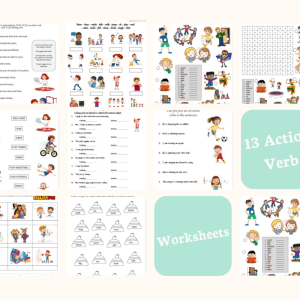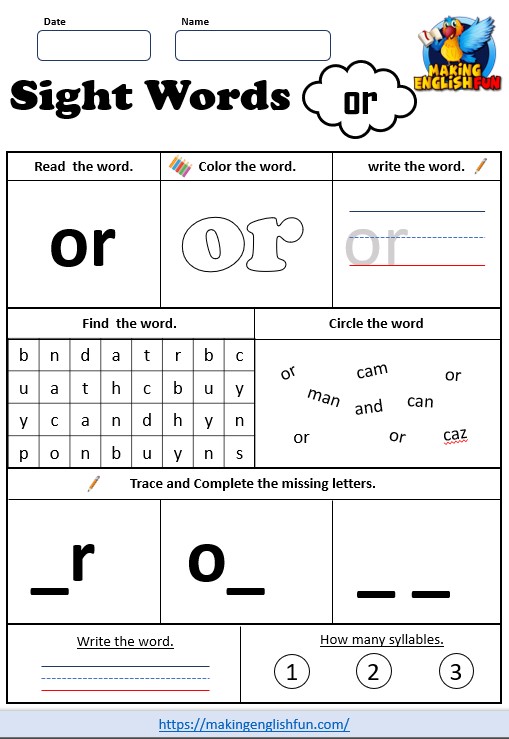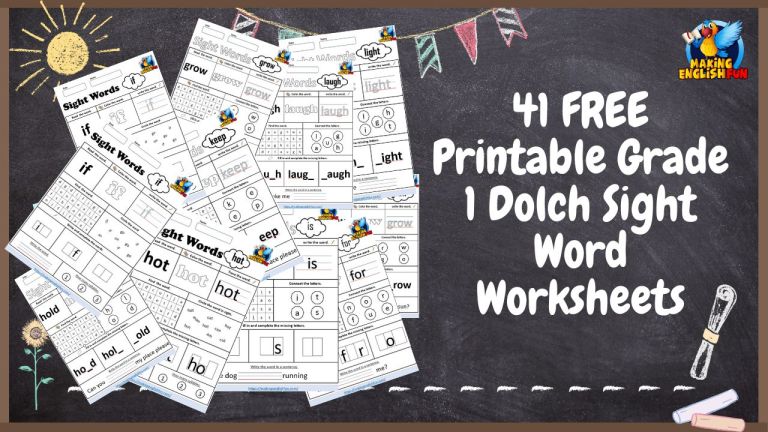Learning the Difference between Action Verbs and Linking Verbs
Learning parts of speech can be challenging for even the most astute learners. Verbs have so many tenses and types that it can seem overwhelming for children. Learning these differences does not have to be difficult. Here are a few tips for helping your children learn the difference between action and linking verbs, with some links to free resources to grab as well.
The difference between action verbs and linking verbs can be described as the difference between an action and a state. An action verb describes an action occurring or that has occurred and a linking verb describes a state of being. It is not an easy concept for younger learners to learn.
Understanding the difference in action and linking verbs is not easy for some children, especially since some linking verbs are also action verbs. Pediaa describes this difference as “Action verbs express an action whereas linking verbs express a state.” This description is one of the best I have seen for this difference.
What are Action Verbs?
Action verbs are just as they seem. They are words that denote an action. A verb is an action or state of being. With action verbs, the word becomes something someone or something does. Words like jump, run, sit, and stand are all action verbs. We have 13 Action verb activities and work sheets here for download.
What are Linking Verbs?
While the above words are used as actions, sometimes action verbs become linking verbs. They do not actually describe an action. Generally, when this happens, the words “is” or “are” can be substituted for these words. For instance, grown can be a linking verb. Grown can be used in multiple ways. I have grown vegetables for the last three years. In this case, grown is the action of the sentence.
My action is growing the vegetables. However, “I have grown tired of the constant negativity on television” uses grown as a linking verb.
What is the Difference Between Action and Linking Verbs?
Understanding the difference in action and linking verbs is not easy for some children, especially since some linking verbs are also action verbs. Pediaa describes this difference as “Action verbs express an action whereas linking verbs express a state.” This description is one of the best I have seen for this difference.
Learn the Difference Between Action and Linking Verbs?
Your child or class will eventually learn the difference, so don’t get too upset if they have trouble in the beginning. This difficulty is expected. You need some patience while they learn the difference. Emphasize the lists of verb types. Some verbs are always linking verbs.
States of Being
Any verb that always describes a state of being will be a linking verb. These verbs are:
- To Be- verbs that are from the infinitive “to be” are linking verbs. These include am, is, are, be, been, was, and were. Must, shall, might, may, and could also accompany the state of being.
- To Become- Become, became, and helpers like have and had become.
- Seem- Seems, seemed, and has, have, and had seemed.
Describe the State of Being
Words that describe the state of being that may be swapped for one of the above words may also be used as linking verbs.
- Appear and Look are related to seem generally.
- He appears to be leaving.
- She looks to be angry.
- Taste, smells, sounds, and feels are all senses and often linking verbs.
- This cheese tastes rancid.
- She smells sweet.
- Turns, grows, falls, and remains may be used as linking verbs to describe the subject.
Testing for Linking Verbs
How can you test to see if a verb is a linking verb? First, if the verb is a form of the infinitive to be, you can rest assured it is a linking verb. However, for these words that may be linking or action, we must consider what they are doing.

Replace with “To Be” Or Other Linking Verbs
If you can replace the verb with a form of “to be,” you have a linking verb. For instance, I have grown tired of his podcast. I am tired of his podcast. I have become tired of his podcast. Each of the preceding sentences contains linking verbs. Grown can be replaced by a “to be” or “to become” verb.
Do the same with taste. The salad tastes fresh. The salad is fresh. In both cases, the sentence retains the same or a similar meaning. Taste in the following sentence cannot be replaced the same way. He tastes the chicken before serving it. He is the chicken before serving it.
These two sentences do not have the same meaning. Likewise, the second sentence becomes nonsensical. This is a red flag that the verb in this sentence is an action.
Can you Act the Verb Out.
If you aren’t sure if the sentence contains an action or linking verb, mime the sentence or play charades. If you were given the prompt in a game of charades, could you act it out? Don’t worry about being a good or bad charades actor. Simply consider whether or not that is an action.
For instance, you can act out tasting chicken. It’s something you can do. On the other hand, you cannot act out tasting foul.
Other Verbs We Have Seen Here
We have also used helping or auxiliary verbs in this post. Words like can, may, should, could, would, will, and have are all auxiliary verbs. They help the verb in the sentence. Some of these verbs change the verb tense to past participle or future perfect tenses.
Like linking verbs, some of these verbs do double duty. The verbs in from the infinitive “to be” are often used to help other verbs. I am running in a race. The helper in the previous sentence is “am” and the verb is “running.” In this case, running is an action verb.
In limited cases, running or run could be a linking verb. I am running late. I am late. I will be late. These are all similar sentences.

Some Actions Are Not Active
Some action verbs cannot be easily performed. Dreaming, thinking, wondering, and hoping are all things that we may be actively doing, but we cannot see them. When considering these verbs to determine active or linking, try to consider if it is something you do.
Thinking is something you are doing. I may not be able to see your brain working, but those imaginary wheels are turning. These are not states of being. They are mental actions.
Final Thoughts
Action, linking, and helping verbs can overlap in writing. Don’t worry too much if your child or students are having a little trouble. Trouble is typical in the beginning. Keep working with your students to determine whether a form of “to be” is helping another verb.
Also, let them act out the verb to see if it is an action (mental or physical). Kinesthetic learning can be phenomenal for younger children as children learn through play. One of the most complicated concepts is learning that verbs are also a state of being rather than doing.
Use a passage from a story you are reading. Have the students count the action, linking, and helping verbs. Then, ask them to replace all the linking verbs with forms of to be. This exercise might help them see why people choose alternate words rather than am, is, are, was, and were when writing creatively.
Ask your students to rewrite sentences with new linking verbs. See how they can come up with some fantastically creative sentences.
[1] https://pediaa.com/difference-between-action-and-linking-verbs/








2 Comments